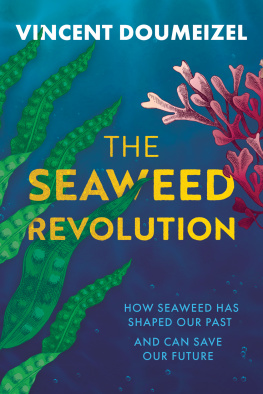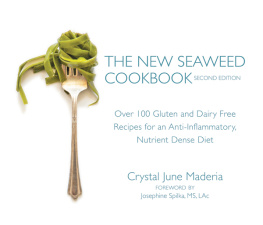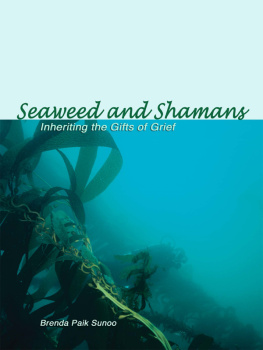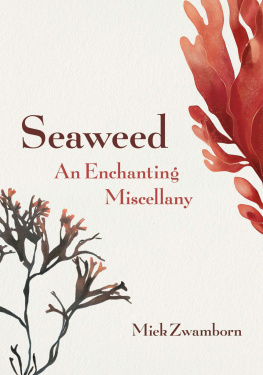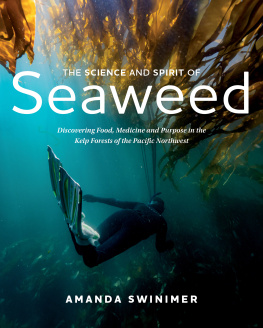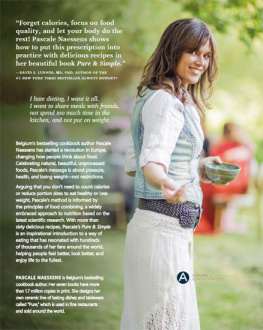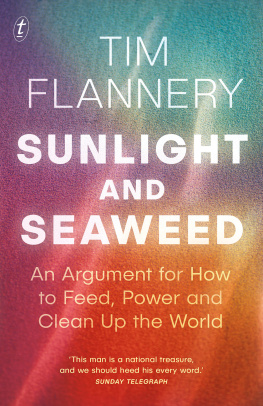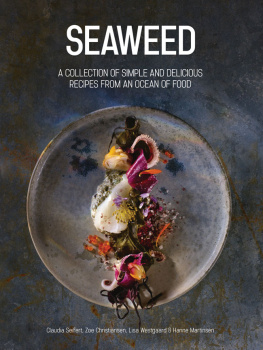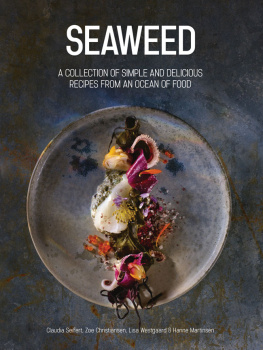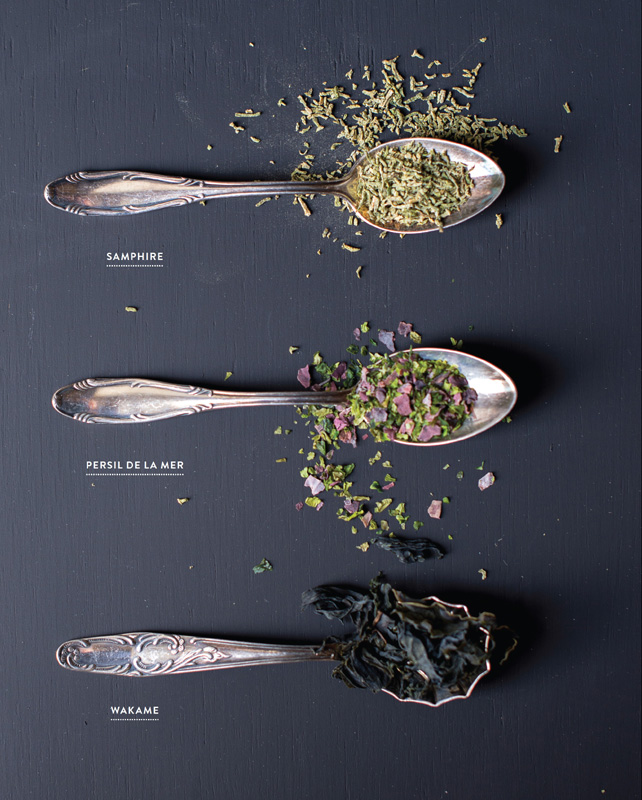
OCEAN GREENS
Explore the World of Edible
Seaweed and Sea Vegetables

A Way of Eating for Your Health and the Planets
with 50 vegan recipes
Lisette Kreischer
Marcel Schuttelaar
and others

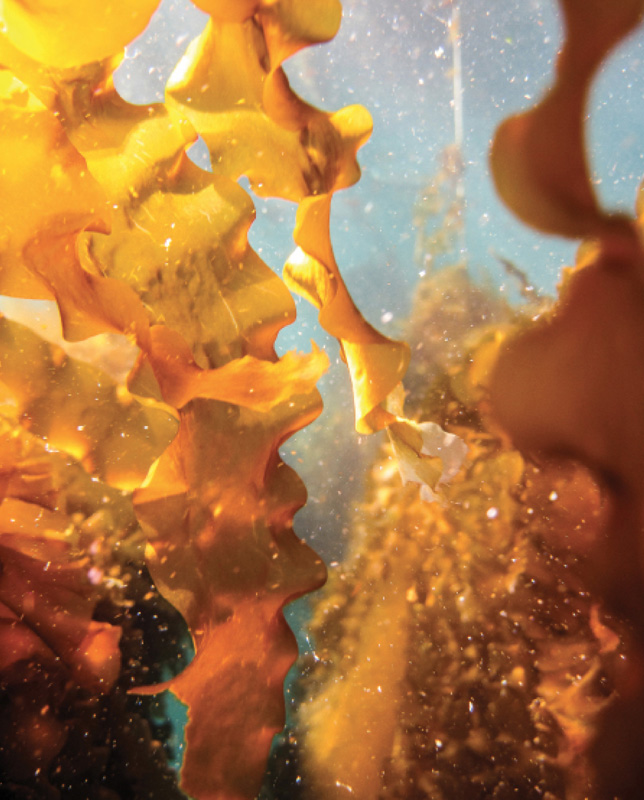
Devils apron (Saccharina latissima)
by Hortimare
Contents

Authors Note
I LOVE THE NORTH SEA; the shoreline runs right next to where I live. Leaving the harbor in my sailboat, Ive crossed its waves numerous times. On the map it may seem like a modest body of water, but once at sea youre struck by its vastness, the emptiness of the place. Besides loving the sea I also have a fascination with vegetables: the enormous variety of types, with their many different colors and flavors. We can all afford to eat more greens. I first researched the consumption of seaweed about forty years ago as a student of human nutrition. Seaweed, I was convinced, would solve the worlds food problem. As it turns out, I was a little ahead of the curve back then.

Several years ago pieces of the puzzle started to come together. I was helping Willem Brandenburg, a preeminent scholar on seaweed, organize a seminar on seaweed cultivation. It was Mr. Brandenburg who pioneered this cultivation in the Dutch province of Zeeland. After all these years, I became reacquainted with the subject and thats when something began to grow....
Soon after, I was asked to help grow seaweed in the North Sea. Would my company be interested in investing energy, time, and money in the founding of a North Sea farm? Despite ample research and lots of talk about seaweed in the Netherlands, no actual cultivation was taking place in the North Sea. It felt right, and we got started. A group of young and enthusiastic people went at it with tremendous energy, often volunteering much of their spare time. The North Sea Farm Foundation was revived, and the first experiment with seaweed farming in the North Sea became a success.
During my first trial at sea I got to know Lisette Kreischer and Roos Rutjes: two women who had chosen to follow a plant-based diet and to become seaweed ambassadors. They wanted to put together a seaweed cookbook and were looking for a partner. In order to put seaweed fully in the spotlight we decided to include only purely plant-based recipes. This is what makes it such a special book. The title was obvious: Ocean Greens. Its a book in which we share our knowledge and skills so that anyone can enjoy eating seaweed as much as we do.
Were at a turning point; salt has wind in its sails.
This book deals with algae and plants that thrive in saltwaterand theres plenty of that all over the world. It features some of the worlds seaweed pioneers: Bren Smith, an ocean farmer and CEO of , a seaweed chef. It also covers the different species and where they grow, their health benefits, how great these plants taste, and how to turn them into the most wonderful dishes.
Seaweed is a term for a variety of remarkable organisms with many illustrious names like dulse, kombu, wakame, Irish moss, devils apron, egg wrack, bladderwrack, sea oak, sea lettuce, and sea spaghetti. There are thousands of green, red, and brown varieties, each of them different and many containing as-yet unknown organic compounds. Theyre so full of bioactive nutrients that you should consume them with some moderation, which has been taken into account in this book. With their multitude of extraordinary fibers and proteins, wonderful algae-derived oils, and many minerals and spores, they are the perfect supplement to our daily diet. They have long been a staple of Asian cuisine for centuries and have long been a part of cultural rituals and medicinal practicesso look for them in Asian markets. In recent years, their characteristic umami flavor has become increasingly popular in the West, and now you, too, can cook with it.
Ocean Greens also covers vegetables that grow on the border between salt water and freshwater in brackish coastal areas that get inundated once in a while. From marsh samphire and common ice plant to sea beet, theres still so much to discover.
This book arrives at a special moment in time. For centuries the sea has been perceived as a threat: an enemy that had to be kept at bay. Salinization was the nightmare of every farmer. Now we find ourselves at a turning point: Salt is on the rise, and more and more, the blue oceans are becoming a green source of both sustainable fuel and tasty food for our future.
Marcel Schuttelaar
Chairman, North Sea Farm Foundation
Founder, Schuttelaar & Partners, consultancy for a sustainable and healthy world
OCEAN GREENS

South ausralia, Kangaroo Island
by Dos Winkel
Seaweed: What is it?
SEAWEED AND ALGAE can be found all over the world. Like bacteria, algae were among the first forms of life on earth. Algae survive under the most severe circumstances, and many researchers believe we owe our existence to the development of algae billions of years ago. That is because algae practice photosynthesis (like trees and plants do), releasing oxygen into the atmosphere and enabling life as we know it. There are thousands of species of seaweed that can differ from one another like day and night. Some kinds grow very slowly and remain small; others create entire forests, so-called kelp forests, in the water. Most types of seaweed are edible, though their flavors vary widely. For example, sea lettuce (Ulva lactuca) is a tender green seaweed that is very accessible, while other kinds are much tougher and not as easy to eat. In Asia, seaweed has been a staple for years and is considered a delicacy. In the United States and Europe, the popularity of seaweed is steadily on the rise. Just a few years ago, not many people were looking for it in their local grocery stores. Nowadays, its everywhere, being sold in most grocery stores in some variety.
What is seaweed?
Algology, or phycology, is the scientific study of algae. Phyco (phukos in Greek) means seaweed and logy (logos) is defined as knowledge or science. Seaweed is the umbrella term for the entire group of macroalgae that live in salt water, brackish water, or freshwater. Algae can be divided into two groups: microalgae (unicellular organisms, like chlorella) and macroalgae (multicellular organisms, like seaweed).
We already know about tens of thousands of species of algae, and new species are being discovered constantly. From an evolutionary perspective, algae are very old. Its estimated that multicellular seaweeds came into existence about 1.2 billion years ago. Unicellular algae have been around for even longer, about 2 billion years. Fossils of algae that date back 600 million years have been found. Seaweed species are usually categorized among the cryptogams (plants that do not produce flowers or seeds), like ferns. They resemble ferns in terms of their structure and reproduction, and are more elementary in that respect than flowers, trees, or agricultural crops.
Next page

